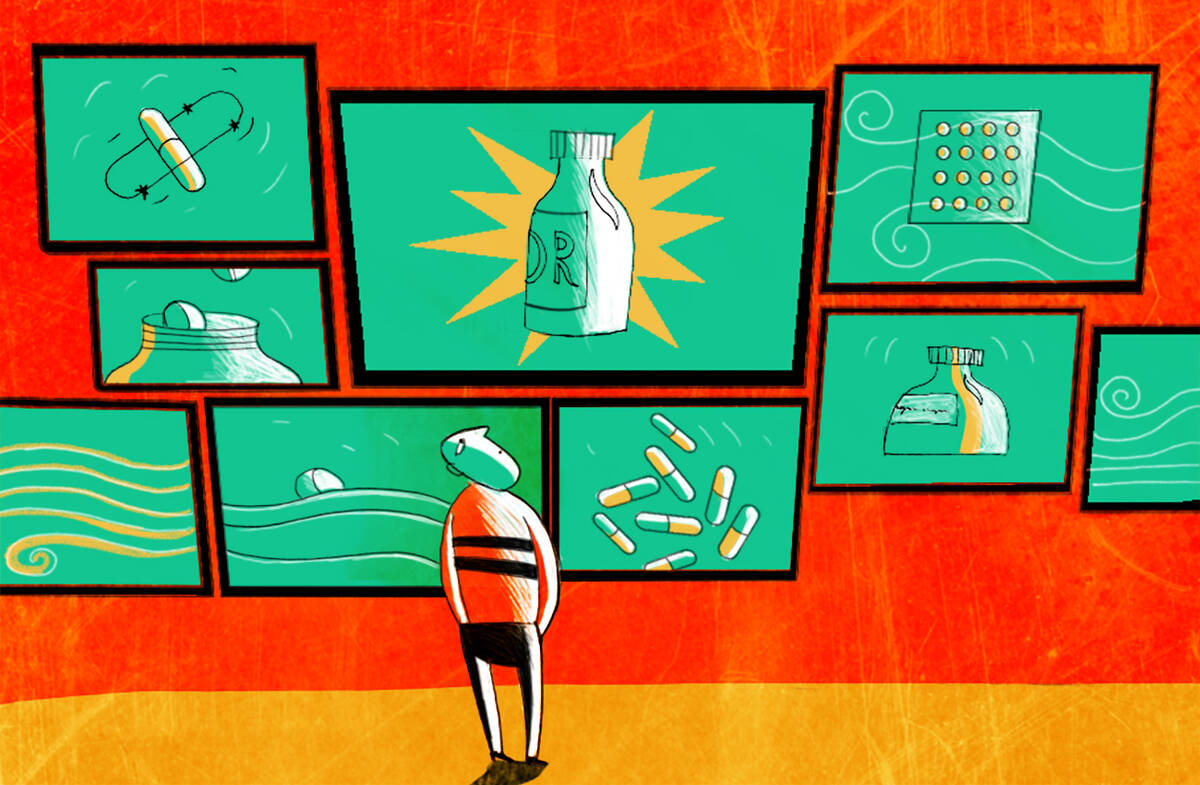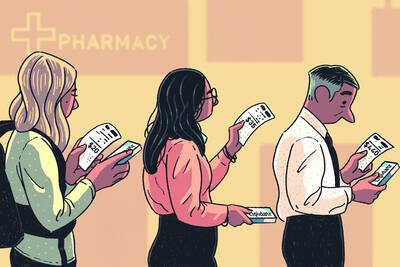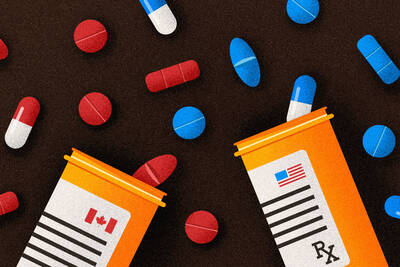Healthcare Policy Dec 2, 2016
The Hidden Benefits of TV Drug Ads
Patients and taxpayers benefit from controversial direct-to-consumer pharmaceutical advertising.

Yevgenia Nayberg
We have all seen the ads: an earnest employee or parent who complains of fatigue but with the help of a specific drug is able to get back on the job or play catch with the kids in the backyard.
These TV pharmaceutical advertisements, known as direct-to-consumer (DTC) ads, are ubiquitous—with drug makers spending $3 billion dollars a year on them in 2012. Yet they remain controversial among economists and other industry observers.
“There’s a longstanding economics question about the effects of ads,” says Amanda Starc, an associate professor of strategy at the Kellogg School. “Do they provide helpful information or just try to persuade people to buy a particular product.”
Some argue that drugmakers use DTC ads mainly to steal business from rivals. This results in a costly arms race that guides consumers toward one of several negligibly differing, expensive branded drugs over equally effective generics. At the extreme, that line of argument supports banning DTC ads.
But other economists suggest DTC ads offer patients important information, boosting overall demand for classes of drugs that can genuinely help people, and ultimately serve a preventative role that benefits society as a whole. After all, some types of drugs, such as cholesterol-lowering statins, provide a broader societal benefit by preventing costly and life-threatening heart attacks.
“We find the value to society of direct-to-consumer advertising is positive on the whole.”
To get at the true effects of these pharmaceutical ads, Starc took advantage of their displacement during the months preceding the 2008 presidential election, when campaign ads dominated people’s screens instead. Specifically, Starc examined how the absence of DTC ads impacted drug sales of four cholesterol-reducing statins.
“The U.S. is unique in allowing DTC ads,” Starc says. (New Zealand is the only other country that does.) “There are a lot of policy implications of this kind of advertising, so we were excited to do the research.”
She found that while the ads did cause some people to switch to a different brand-name drug, the overall benefit to society of encouraging consumers to try the drugs outweighs these costs. Given the health and financial benefit of taking a pill versus having a heart attack, she calculates that the benefit of the statin ads is enough to justify all spending on DTC ads.
Direct-to-Consumer Ad Displacement
The research was motivated in part by an unlikely source: Starc’s memories of visiting her home state of Ohio during presidential election years.
“Ohio’s a swing state and there would be constant campaign ads on TV,” says Starc, who has a longstanding interest in the economics of healthcare. When she mentioned the issue to her coauthor, Michael Sinkinson of the Wharton School, he noted that other hotly contested swing states had similar advertising patterns.
That situation would make the basis for an interesting experiment, they realized.
“If we’re seeing so many ads for political candidates,” Starc says, “then we’re not seeing ads for something else.”
The researchers theorized that ads for pharmaceutical drugs were likely being displaced, in part because both political ads and DTC pharmaceutical ads often target similar demographics, such as Baby Boomers.
The displacement of pharmaceutical ads in specific states—but not others—at specific times of the year allowed the researchers to compare drug sales where the ads were and were not appearing.
Analyzing the Effects of DTC Pharmaceutical Advertising
In their study, the researchers focused on statins, a particularly effective class of pharmaceuticals. “Health economists joke that we should put statins in the drinking water, since they’re cost-effective and work so well,” Starc says. They have also been financially successful for manufacturers, with billions in revenues.
But we as taxpayers also benefit.
“We know statins reduce the number of heart attacks people have, and large numbers of people on statins are on government-funded Medicare, so if they have a heart attack, that’s very expensive for Medicare to cover,” Starc says. “As taxpayers, we’d rather pay the $3 a day for a statin than the high cost of hospitalization for a heart attack.”
Studying the effects of DTC statin ads, the researchers believed, would help illuminate the ultimate purpose that the advertisements serve. “If you think these ads increase demand for a cost-effective drug,” Starc says, “then that’s a practice you don’t want to ban but to encourage.”
The researchers analyzed how DTC advertising affected sales of four statins—Lipitor, Crestor, Vytorin, and Zetia. Sales data came from two sources: prescription numbers, as well as revenues from a sample of individuals enrolled in employer-sponsored insurance and Medicare Part D. Both data sets covered 186 designated geographic TV marketing areas, as identified by Nielsen, only some of which experienced ad displacement.
“Different people got different exposure to drug ads for reasons that have nothing to do with their underlying drug demand,” Starc says. “That means any difference in statin sales couldn’t be explained by unobserved consumer characteristics.”
The Case for DTC Ads
The results: overall, DTC ads for statins boost sales for more than just the single drug being advertised.
“We find the ads have positive effects when you consider the category as a whole,” Starc says. “When you see a Crestor ad, you’re more likely to get Crestor, but you’re also more likely to potentially get one of the older drugs that’s off-patent, which we can see as positive spillover.”
This informational effect of DTC ads, in the case of statins, promotes healthier choices by a larger group of consumers. “That the advertising is getting more people to take statins is good from a social standpoint,” Starc says. In fact, the effects found were driven largely by new consumers who qualified for a statin prescription, rather than existing prescription users.
That does not mean the ads promote zero business-stealing. “If you see an ad for Lipitor, you’re more likely to buy that than Crestor,” Starc says. “So the ads don’t have just an informational function.”
In fact, the ads do significantly draw prescriptions away from competitors. The findings showed that revenue for branded advertised drugs would have been up to 24% higher in the absence of rival advertising. The “you advertise, so I have to advertise” mentality within the industry may result in more advertising than is truly needed, according to Starc.
Still, because of the overall benefits that statins provide, “we find the value to society of direct-to-consumer advertising is positive on the whole,” Starc says.
Meaning, even if companies are prompted to use DTC ads because of competition, the overall impact is good. The research showed, in fact, that banning DTC ads would lower sales of unadvertised drugs by about 4%.
Starc and her coauthor are continuing this line of research by examining the trade-offs associated with DTC ads.
“We’re working on nailing down the cost–benefit analysis, and we’ll go from there,” she says.



